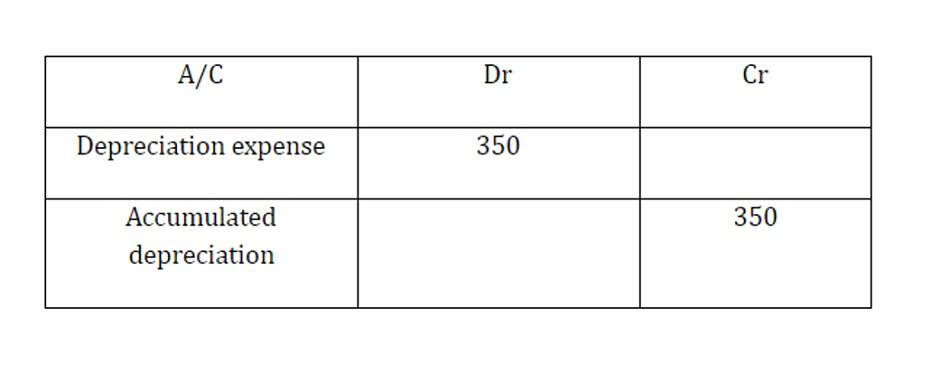
Since the cost of goods sold is the cumulative cost for all 365 days during the year, it is important to relate it to the average inventory cost throughout the year. Times interest earned, which is also known as the interest coverage ratio, is an indicator of a corporation’s ability to pay the interest on its debt, such as loans payable and bonds payable. Average accounts payable is the average amount owed to suppliers during the same period.
- Financial leverage is the percentage change in net profit relative to operating profit, and it measures how sensitive the net income is to the change in operating income.
- Key efficiency ratios include Inventory Turnover, Accounts Receivable Turnover, and Asset Turnover.
- Normalizing the ratios to account for different accounting treatments helps compensate.
- This account is a non-operating or “other” expense for the cost of borrowed money or other credit.
- Investors consider various economic and financial factors such as the overall state of the economy, competition, or financial reports of each asset or a security – anything that impacts a specific economy.
Leverage Financial Benchmarking to Deliver Superior Insights
- They show how debt stacks up against the categories of assets and equity on the balance sheet.
- Thus, it’s typically not helpful to perform a ratio analysis of a company and compare its cash ratio against businesses in other industries.
- In addition, the P/E ratio can signal whether a stock is undervalued or overvalued.
- Some people prefer to invest in companies with a steady dividend, even if the dividend yield is low, while others prefer to invest in stocks with a high dividend yield.
- If the corporation were to liquidate, the secured lenders would be paid first, followed by unsecured lenders, preferred stockholders (if any), and lastly the common stockholders.
- As a contra revenue account, sales discount will have a debit balance and is subtracted from sales (along with sales returns and allowances) to arrive at net sales.
This means the company generated Rs.5 in sales for every Rs.1 invested in fixed assets. A higher ratio indicates assets are being used efficiently to generate sales. A low ratio indicates excess fixed assets or inefficient use of long-term assets. For example, suppose a company pays Rs.2 million in dividends from a net income of Rs.10 million; its payout ratio is 20% (Rs.2 million / Rs.10 million). This indicates that 20% of the company’s profits are returned to shareholders as dividends.
Financial Ratios Using Income Statement Amounts

Most real deployments use retrieval augmentation or guardrails to keep answers accurate and policy-aligned. They’re built to understand finance, and talk like a human, whether you’re a banker checking policy, or an investor tracking the market. Fundamental analysis can be a beneficial tool for making investment decisions, depending on your investing style. However, it’s important to remember that conclusions are always subjective and should be approached with caution. It is a very comprehensive approach to investing that requires a lot of research, which is why a good understanding of the economy, accounting, and finance is often necessary.

Navigating Crypto Frontiers: Understanding Market Capitalization as the North Star
The purpose of financial ratios is to enhance one’s understanding of a company’s operations, use of debt, etc. Financial ratios are sometimes referred to as accounting ratios or finance ratios. These ratios are important for assessing how a company generates revenue and profits using business expenses and assets in a given period. Proper ratio analysis provides a quantitative assessment of a company’s financial condition, identifying strengths, weaknesses, and potential risks that can inform investment and financing decisions. Understanding trends in key financial ratios is essential for a thorough fundamental analysis of public companies. One key type of ratio is the liquidity ratio, which measures a company’s ability to meet its short-term obligations.
Step 3: Divide the cash and cash equivalents by short-term liabilities

Based Online Accounting on this calculation, Apple’s quick ratio was 0.89% as of March 2024. This number could be higher if more assets were included in its calculations. Advisory services provided by Carbon Collective Investment LLC (“Carbon Collective”), an SEC-registered investment adviser.

Efficiency examples of financial ratios ratios are important metrics used by investors and analysts to evaluate how effectively a company is utilizing its assets and managing expenses. Efficiency ratios also reveal issues like bloated inventories or poor collection processes. They provide insights into which companies are operating leanly and converting assets into profits most effectively when comparing stocks. Assessing efficiency helps investors identify well-run companies that make effective use of capital.
Common-size balance sheet resulting from vertical analysis
Effective financial benchmarking provides critical context needed to truly understand a company’s performance. By comparing metrics to industry standards and similar companies, you can better identify performance strengths. Comparative data, like multiples and growth assumptions, ensure your valuation models reflect market realities and relative performance.
- Your discounted cash flow (DCF) model tells you that the net present value (NPV) of this asset, assuming a 5-year life, $25,000 per year cash inflow, and a 5% discount rate, is $108,236.
- Understanding the financial health of a company is essential for investors, creditors, and even business owners.
- Comparing the Ratio over time or to industry benchmarks provides insights into a company’s changing capital structure and use of debt financing.
- The current ratio expresses the relationship between a current asset to current liabilities.
- On the other hand, investors may not be interested in a company that has too high of a cash ratio, which may indicate that it’s holding onto too much cash and not willing to invest in growth or expansion.
- For example, suppose a company has Rs.5 million in net sales during a year and an average working capital of Rs.1 million; its working capital turnover is 5.
Step 2: Identify the short-term liabilities value
It’s important to consider other qualitative and quantitative factors alongside financial ratios for a comprehensive analysis. This ratio indicates the efficiency with which an enterprise’s resources utilize. Again, the financial ratio can be calculated Food Truck Accounting separately for each asset type. The quantitative side of fundamental analysis involves an in-depth analysis of financial statements, in which a company discloses information concerning its financial performance.

By examining various mathematical relationships between financial statement items, stakeholders can gain insights into profitability, liquidity, efficiency, and solvency. These ratios provide a quantifiable means to compare a company’s current performance with its past performance or with industry benchmarks. Ratio analysis in accounting is a crucial tool for evaluating the financial health of a business. It involves the use of various mathematical relationships derived from financial statements to assess different aspects of a company’s performance.
